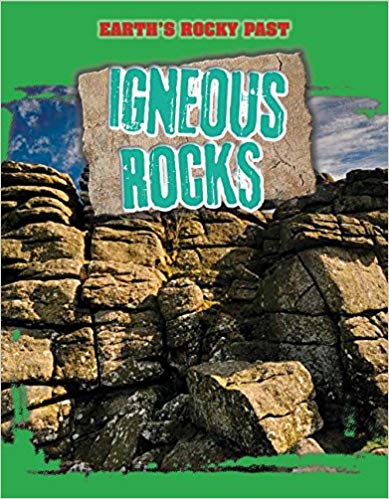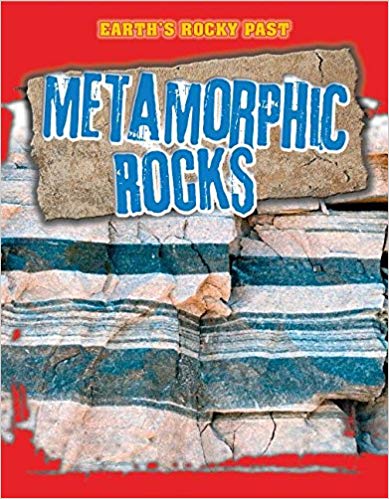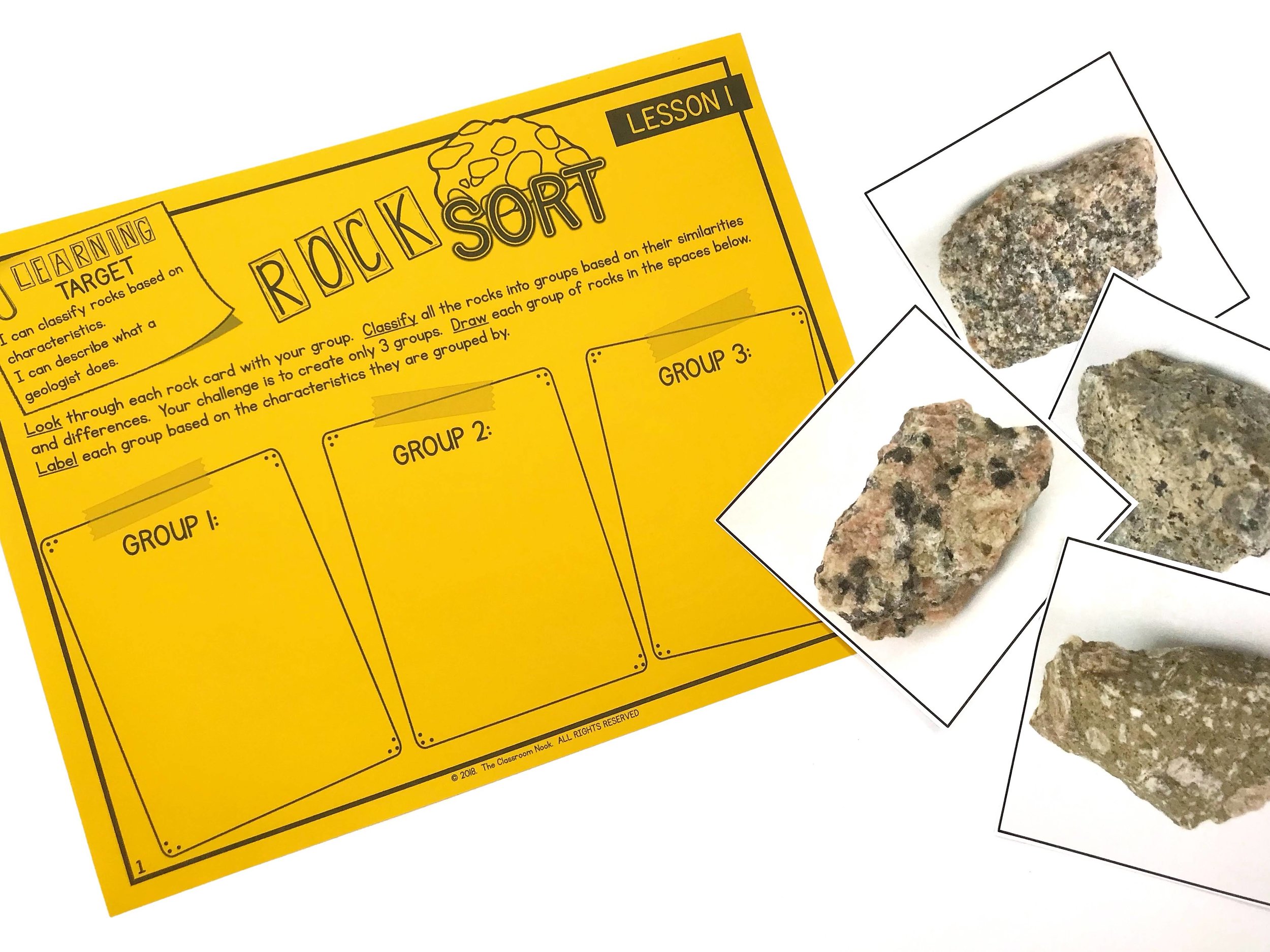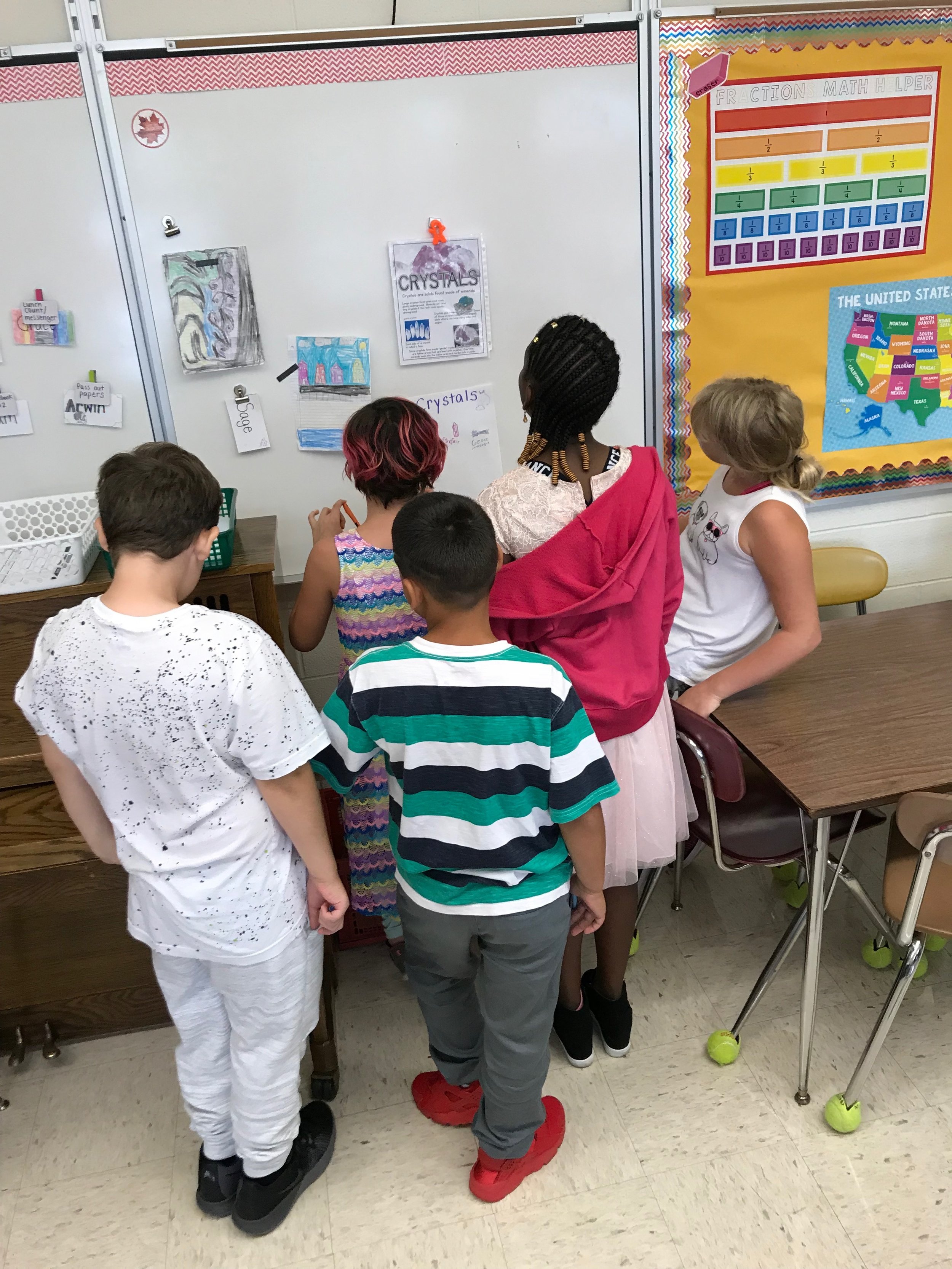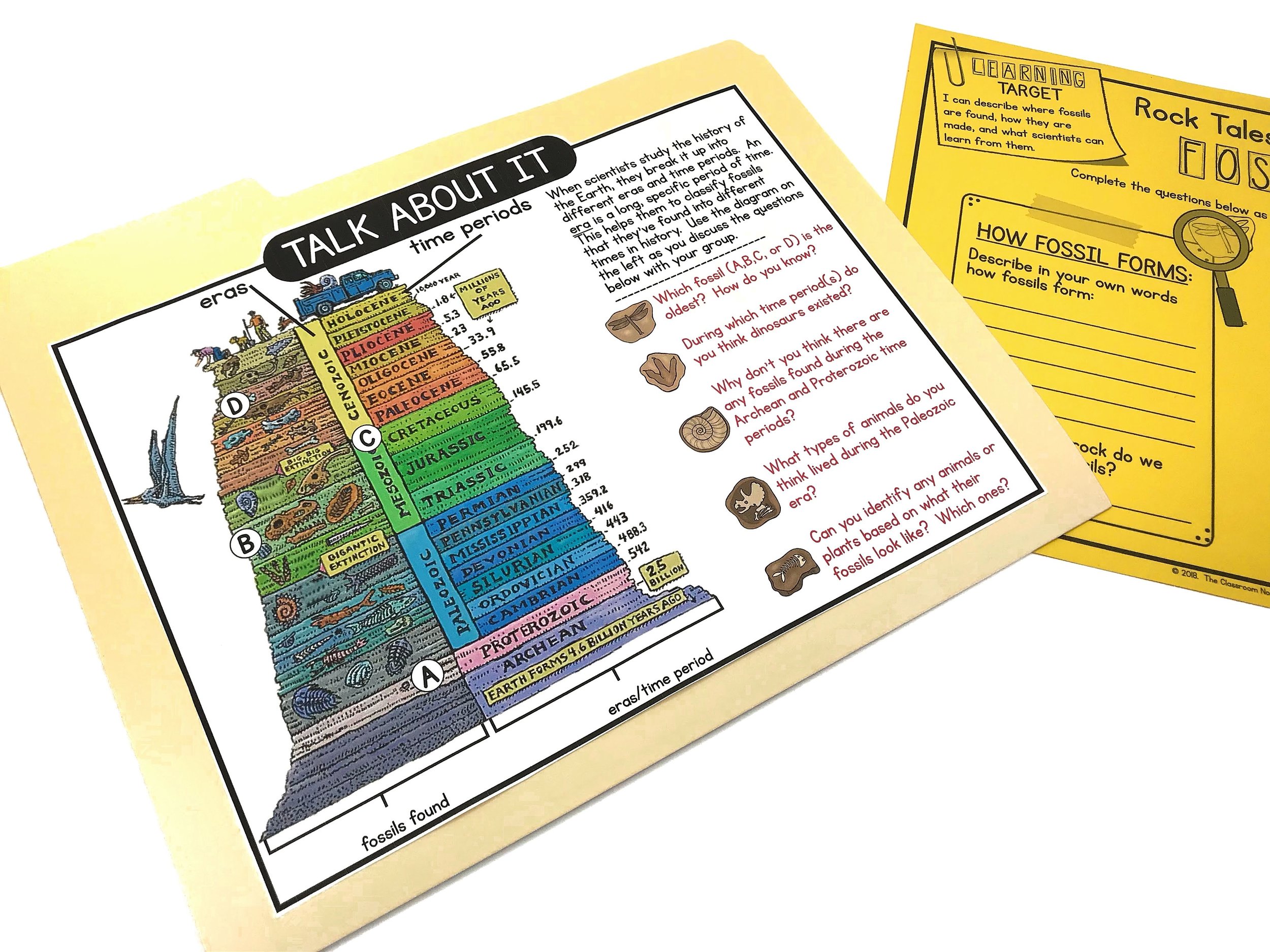Getting Ready to Teach Rocks and Minerals
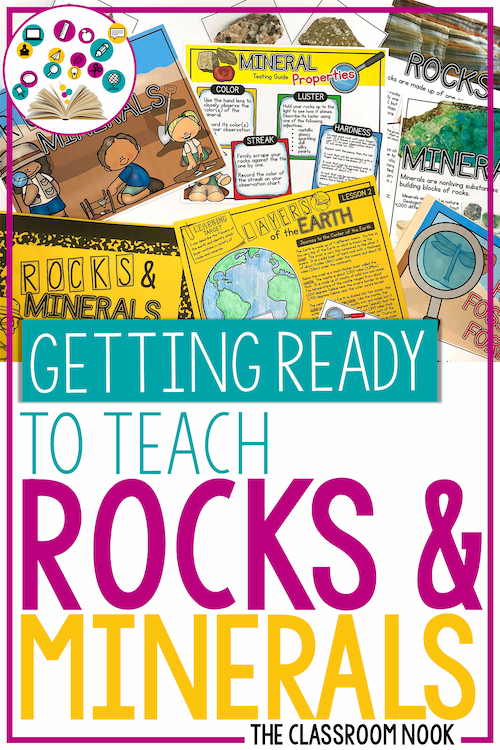
Science is usually an easy subject to make exciting and interesting for students. However, there are some science topics that can be a little...shall we say...dry.
Teaching rocks and minerals can most definitely be a dry science topic, but - it doesn't have to be! Not if you include plenty of hands-on activities, awesome pictures and books, and interactive small group activities.
In this post I've unloaded my favorite books,videos, and activities to use when teaching rocks and minerals. Ready to rock?
Pun completely intended :)
IMPORTANT TOPICS TO COVER:
Most upper elementary teachers cover the following topics in their rocks and minerals unit. Here's the order that I like to teach them in:
Layers of the Earth - I start here to help students understand that geologists study rocks and minerals found in the crust of the earth.
What Are Rocks and Minerals? - After students know where rocks and minerals are found, we take a deep dive into what rocks and minerals are, where they are found, and how we use them.
How Are Rocks Formed? - In this lesson, students learn about the 3 types of rocks (igneous, metamorphic, and sedimentary). They learn how each one forms
Mineral Properties - Once students have an understanding of the different types of rocks, we focus on the minerals that make up different rocks. We explore their properties (such as color, streak, hardness, luster...etc.)
The Rock Cycle - Next, students learn the "life cycle" of a rock as they learn how heat, pressure, and time change rocks from igneous, to sedimentary, to metamorphic.
Fossils - The final we topic we discuss is how paleontologists study fossils found in rocks, specifically in sedimentary rock. They learn how fossils form in these rocks and the different types of fossils that form.
BOOKS ABOUT ROCKS & MINERALS
I was surprised how many great books there were in my local library about rocks and minerals! Whenever I start a unit in one of the content areas, I love to create a special basket in my classroom library all about that topic. That way, students can do some exploring on their own during independent reading time. It's the perfect way to bridge your content areas into your literacy block.Here are my favorite book titles (click on each book for details - affiliate links provided):
A Rock Is Lively - This book is perfect for introducing your unit! The illustrations are beautiful and give students a quick over-view of what you'll be covering in your unit. It helps students to see that rocks and minerals are everywhere in their every day life.
The next three books, Sedimentary Rocks, Igneous Rocks, and Metamorphic Rocks are great because they break down each type of rock. They would be great books to use if you wanted to divide students into groups and have them each research a type of rock to then present to the rest of the class. They also are just great to have in the classroom for individual exploration.
Rock Star Rocks - This book is super helpful for students to see various examples of rocks, what minerals make up each rock and where the rock can be found. You'll find real pictures of each rock, which is crucial for students to fully understand the make-up of the rock itself.
Rock Star Minerals - Similar to the book above (Rock Star Rocks), this book has a similar format about minerals. It goes over what minerals are, how they are formed, and their properties. It even teaches students how to start their own collection.
Scholastic True or False: Rocks & Minerals - I love the layout and structure of this book! Throughout its pages, the book poses several statements about rocks and minerals that students guess to be true or false. Then the real answer is revealed along with an explanation and some awesome photos!
VIDEOS FOR TEACHING ROCKS & MINERALS
I also try to introduce new content in multiple formats whether it be text, audio, or visual. With YouTube and Study Jams, you're never at a loss for finding a video that will help you teach the different concepts of rocks and minerals.
If you haven't checked out Scholastic's "Study Jams" video library - you're missing out (and so are your students!) This site has TONS of math and science videos, including 10+ videos on rocks and minerals. Simply head HERE, and choose the "Landforms, Rocks and Minerals" collection from the drop-down menu.
And, of course, there's YouTube! Take a peek at these two great videos on Rocks and Minerals (of course there are so much more!)
AWESOME ROCKS AND MINERAL ACTIVITIES
When teaching rocks and minerals, it is CRUCIAL that you allow your students to participate in some hands-on activities. Reading about rocks and minerals is boring and dry! Here are some activities that I think will help your young geologists get excited about your unit:
Rock Sorting
If able, get your hands on some real rocks for students to touch and observe. You can purchase simple rocks and minerals kits if your school doesn't already have some. If this isn't an option, then pictures of real rocks (not clip art) are best.
As an introductory activity, before we go over how rocks are classified, I like to let students work in small groups and decide how they might sort them.
Gallery Walk
As an alternative to reading out of the text book, a gallery walk get students up and moving and interacting with each other. To create a gallery walk, take the information that you want your students to learn and create several posters with that information. Be sure to include some great photos! Place the posters throughout the room on walls or on tables. You can even place books and artifacts or other related items at each gallery "station" for students to further explore. Then, have your kiddos walk around the room going from from poster to poster.
At each gallery station, students also create a "graffiti" poster with images and words to illustrate what they are learning.
You May Also Like to Read: R.I.P TEXTBOOKS: ALTERNATIVES TO BORING OR OUTDATED TEXTBOOKS
Mineral Property Testing
Students will better get a grasp of the concept of mineral properties if you actually let them test some themselves. Again, you'll need a simple rocks and minerals kit (or create your own collection of rocks!) Students can easily observe a mineral's color, streak, hardness, and luster.
With a few other simple tools like a hand lens, a un-glazed tile, a penny, and a steel nail, students will be able to test several mineral properties like color, streak, luster, and hardness of different minerals.
Edible Rocks
Anytime you add food to the learning equation, you have instant engagement. Make the concepts of each type of rock (sedimentary, metamorphic, and igneous) a bit more concrete by having student create them using food. I LOVE this video that shows you how to do exactly that!
You can watch the video with your kids - or actually do the experiments with your students!
Fossil Folders
I do just a quick lesson on fossils in my rocks and minerals unit because it helps students to see the role sedimentary rock plays in creating fossils. It also allows me to sneak in some extra information like how fossils form, paleontology and studying fossils, fossil fuels, types of fossils, and some amazing fossil discoveries - all without having to spend a ton of extra time. How do I fit it all in with just one lesson? Easy! Fossil Discovery Learning Folders! (PS - the folders are sold separately, OR as part of my complete unit on Rocks & Minerals)
I use discovery learning folders in many of my units because it replaces boring textbook work with more engaging learning activities. Students work in small groups and rotate through the folders working together, completing response activities, and learning new information!
Well, there you have it! Some easy ways to make your rocks and minerals unit...well - ROCK!
Want to save a TON of time in preparing for your rocks and mineral's unit? Say no more! Check out my complete unit that includes all of the activities I've mentioned in this post and much more! You can see all the details here:



